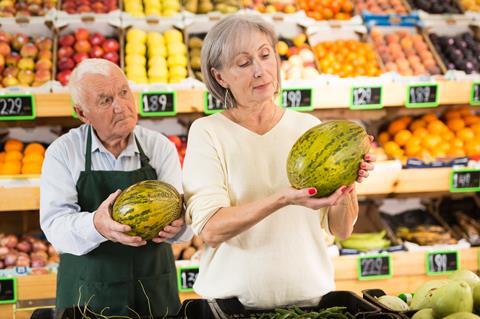Quality, seasonality, taste and ease of consumption main driveres of fruit choice, research reveals

Orsero group has published an in-depth study on what drives Italians’ decisions on what fruit to consume. “Giving good fruits - Italians and the ‘new’ habits of fruit consumption”, which was undertaken in collaboration with the IPSOS research institute, sampled over 1,000 men and women between 18 and 65 years old.
It classifies fruit consumers into five groups – wellness explorers, attentive gourmets, traditionalists, food lovers and taste innovators. All respondents agreed that eating fruit means eating healthily, and that eating healthy is synonymous with quality.
“Fruit is a must in the diet, regardless of eating style, and is recognised as important for its nutritional properties, particularly in terms of vitamins,” the company said.
Apples and bananas top the lists, but the exotic advance
The study shows that Italians on average consume seven different types of fruit per month. Alongside apples (78 per cent), bananas (78 per cent) and oranges (69 per cent) which remain the most popular varieties in terms of price and purchasing habits, other types are increasingly present in Italians’ shopping carts, such as strawberries (59 per cent), kiwifruit (40 per cent), pineapples (31 per cent), avocados (17 per cent), ginger (12 per cent) and berries (21 per cent). All have benefited from work in the supply chain to increase varietal choice and improve quality, taste and availability, allowing consumers to buy them all year round.
Regarding the quantity of fruit consumed compared to the past, 45 per cent of respondents said this remains unchanged and 45 per cent said this has increased, both as a result of adopting a healthier diet and increased consumption opportunities during the day.
Raffaella Orsero, vice president and CEO of the Orsero Group, commented: “Over the last 15 years in Italy, the quantity of fruit consumed has remained fundamentally constant; what has changed is the mix of products consumed.
“We have observed a shift in the volumes of consumption from traditional fruits, such as pears, towards exotics, such as avocado. The greater consumption of exotic fruits is also due to the fact that, by traveling more, people today are more familiar with these products than in the past, while changes in lifestyles, which are now more dynamic, have led to a greater preference for products that are easy to consume outside the home, such as berries”.
Drivers and freedom of choice
Seasonality remained an important requirement for 51 per cent of respondents, along with value for money (44 per cent) and taste (42 per cent). The report said it is becoming increasingly common to buy fruit all year round if consumers perceive the quality and goodness as remaining unchanged.
However, when this is not the case, seasonality prevails. For berries, for example, 48 per cent of respondents put the taste first, while 44 per cent cited the benefits deriving from their consumption. In mangoes and avocados, the taste requirement was accompanied by perceived quality and degree of ripeness.
Plenty of innovation but little perception
The survey also showed that consumers generally do not associate product innovation with fruit, although they appreciate new products like yellow kiwifruit and seedless fruit for their taste and quality.
In fact, only one in five respondents associated the concept of product innovation with fruit and recognised its importance. Those who did perceive its value understood its scope in terms of nutritional values, usability and taste.
“Those people, who have very high consumption potential, are those who are less tied to the concept of seasonality, and are inclined to choose more usable products and to experiment,” Orsero said.
More enjoyment – without sacrificing taste
The survey highlighted how respondents often purchased fruits they perceived to come more user-friendly formats such as ready-to-eat presentations. While 53 per cent of respondents consumed fruit at lunch, 48 per cent at dinner and 53 per cent as an afternoon snack, the increase in consumption outside the home was seen to be an issue with less easy to eat products.
More large-scale retailers but small businesses hanging on
According to the study, the supermarket is the designated place for purchasing fruit for 66 per cent of respondents. Reasons cited were greater variety and choice, quicker purchasing and the perception of savings, although the report said this is not always the case.
Respondents who chose the local greengrocer (32 per cent) and the local market (25 per cent) did so because they perceive their produce to be fresher (46 per cent) and it allowed them to benefit from the shopkeeper’s advice (28 per cent).



